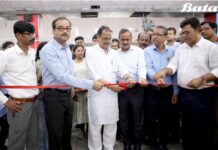- Iron oxide pigments from LANXESS are not affecting biodegradation and compostability of bioplastics
- Pigment analysis makes it easier to ensure compliance with heavy metal limits in formulations
Cologne, July 09, 2021: LANXESS supports masterbatch producers in the process of formulating colored biodegradable plastics by offering pigment analyses. As a result, the Inorganic Pigments (IPG) business unit offers a unique service by providing its customers with recommendations regarding the maximum pigment concentration of iron oxide pigments of the Colortherm brand in so-called bioplastic formulations with a low heavy-metal content.
“Our Colortherm iron oxide pigments are ideally suited to the task of coloring compostable plastics. The decomposition of the polymer is not affected,” says Stefano Bartolucci, Global Market Segment Manager for Plastics at IPG. “Based on the recommended pigment dosing, masterbatch producers can instantly develop individual formulations for colored biodegradable plastics – no expensive pigment screening is required,” says Bartolucci. Thanks to the Colortherm-brand iron oxide pigments from LANXESS, which, unlike alternative products on the market, are proven to be almost completely free from heavy metals, the limits for biodegradable plastics can be reliably maintained, even with a high pigment content.
Due to regulated heavy-metal levels, certain pigment classes cannot be used for coloring biodegradable plastics made from renewable or fossil resources. This is the case with, for example, nickel-, chrome- or copper-based pigments.
Making it easier to comply with the heavy-metal limits of the Organic Waste Ordinance
The global production capacity for bio-based plastics is growing annually by 7%. These products include not only non-biodegradable plastics made from natural raw materials, but also biodegradable plastics made from renewable or fossil resources. LANXESS estimates that around 2,800 kilotons (kt) of bioplastics will be manufactured annually by 2025, with 1,800 kt of this amount being biodegradable. This trend is being driven by, among other things, the discussion surrounding microplastics, the desire for resource security, and plastic waste policies in many countries.
“Green” products, recyclability, and compostability are in high demand and demand huge changes in the industrial sector because biodegradable plastic has to fulfill all the relevant usage standards applicable in various regions of the world before it can be sold. A host of regulatory directives apply, including the European standard EN 13432:2000 and US standard ASTM D 6400. These specifications encompass plastics and the resulting products destined for composting in municipal and industrial aerobic composting plants. Colortherm from LANXESS ensures that both of these standards can be easily complied with in accordance with the recommendation.
Comprehensive offering for coloring plastics
The inorganic pigments from LANXESS are widely used in the coloration of plastics for a broad range of applications. “Our pigments can enhance the properties of plastics, make them more cost-efficient, and increase flexibility in production. Our application specialists can also help customers all over the world find solutions to their challenges,” says Bartolucci. The company runs a global network of state-of-the-art laboratories and technical application facilities.
The Colortherm iron oxide pigments from LANXESS are available in red, yellow, brown, and black and also in numerous intermediate tones. They do not require special labeling, nor are they classified as hazardous substances. The consistently high product quality is achieved through the systematic use of controlled raw materials combined with continuous quality controlling. Production takes place to the highest standards of sustainability.
You can find more detailed information about the products and services provided by LANXESS at www.bayferrox.com.
Corporate Comm India (CCI Newswire)
































